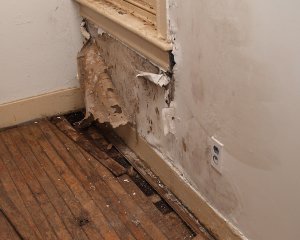Your House's Common Common Triggers of Leakage: Thorough Investigation
Your House's Common Common Triggers of Leakage: Thorough Investigation
Blog Article
They are making a number of great pointers on the subject of How to Find Water Leaks as a whole in this content down the page.

Leakages not only cause waste of water but can also cause unnecessary damage to your house as well as promote undesirable natural development. However, water leakages may go unnoticed considering that a lot of the pipework in our residence is concealed. By looking and recognizing for day-to-day situations that cause leakages, you can secure your house from future leaks and also unnecessary damage. Today, we will consider 6 leak causes that might be triggering your pipes to drip.
Instant temperature level modifications.
Extreme temperature level modifications in our pipes can create them to expand and also contract suddenly. This expansion and also contraction may create fractures in the pipelines, specifically if the temperature level are below freezing. If you maintained an eye on how your plumbing functions, it would be best. The presence of the formerly stated conditions frequently indicates a high threat.
Rusty water systems
This could be the cause of staining or bending on your water pipelines. If our plumbing system is old, think about changing the pipelines considering that they are at a greater threat of deterioration than the newer models.
Faulty Pipeline Joints
The factor at which your pipelines attach is often the weakest web link in the waterline. Pipeline joints can wear away with time, causing water leaks. Regrettably, the majority of pipeline joints are not quickly noticeable. If you have noisy pipes that make ticking or banging noises, especially when the hot water is turned on, your pipeline joints are possibly under a great deal of stress. It is a good idea to have your plumber check your system yearly.
Trespassing roots
Most water leakages begin outside your home rather than inside it. If you notice an abrupt decrease in water stress, state in your tap, take time to go out and also analyze your lawn. You might see wet patches or sinkholes in your backyard, and that might mean that tree origins are invading water lines causing water to permeate out. You can have your plumber check for breach, specifically if you have trees or hedges near your home.
Poor Water Connectors
At times, a leakage can be triggered by loosened hose pipes and also pipes that provide your devices. In case of a water links leakage, you might observe water running directly from the supply line or pools around your devices.
Clogged Drains
Obstructed drains might be irritating as well as inconveniencing, yet they can often wind up causing an overflow causing break pipes. Keep eliminating any materials that may go down your drains that can clog them to prevent such hassles.
All the above are root causes of leaks however not all water leakages arise from plumbing leakages; some leakages might come from roofing leakages. All leakages need to be repaired right away to prevent water damage.
Leakages not only create waste of water but can also cause unnecessary damage to your house as well as promote unwanted organic growth. By comprehending as well as looking for day-to-day scenarios that create leakages, you can shield your residence from future leakages and also unneeded damages. Today, we will certainly look at 6 leakage creates that might be creating your pipelines to trickle.
At times, a leakage can be created by loosened tubes and also pipelines that provide your home appliances. In situation of a water links leakage, you might observe water running straight from the supply line or pools around your home appliances.
How To Check For Water Leak In Your Home
How To Check for Leaks
The average household's leaks can account for nearly 10,000 gallons of water wasted every year and ten percent of homes have leaks that waste 90 gallons or more per day. Common types of leaks found in the home are worn toilet flappers, dripping faucets, and other leaking valves. These types of leaks are often easy to fix, requiring only a few tools and hardware that can pay for themselves in water savings. Fixing easily corrected household water leaks can save homeowners about 10 percent on their water bills.
To check for leaks in your home, you first need to determine whether you're wasting water and then identify the source of the leak. Here are some tips for finding leaks:
Take a look at your water usage during a colder month, such as January or February. If a family of four exceeds 12,000 gallons per month, there are serious leaks.
Check your water meter before and after a two-hour period when no water is being used. If the meter changes at all, you probably have a leak.
Identify toilet leaks by placing a drop of food coloring in the toilet tank. If any color shows up in the bowl after 10 minutes, you have a leak. (Be sure to flush immediately after the experiment to avoid staining the tank.)
Examine faucet gaskets and pipe fittings for any water on the outside of the pipe to check for surface leaks.
Undetected water leaks can happen without the home or business owner even realizing. If you suspect a water leak, but not able to find the source. It is time to contact a professional water leak detection service, The Leak Doctor.
How To Find a Water Leak In Your Home
https://www.leakdoctor.com/blog/How-To-Check-For-Water-Leak-In-Your-Home_AE197.html

I was made aware of that article about Common Water Leaks In House through a good friend on our other web page. Those who enjoyed reading our article plz remember to pass it around. We love reading our article about How Fast Water Damage Can Ruin Your Home.
Click For More Information Report this page